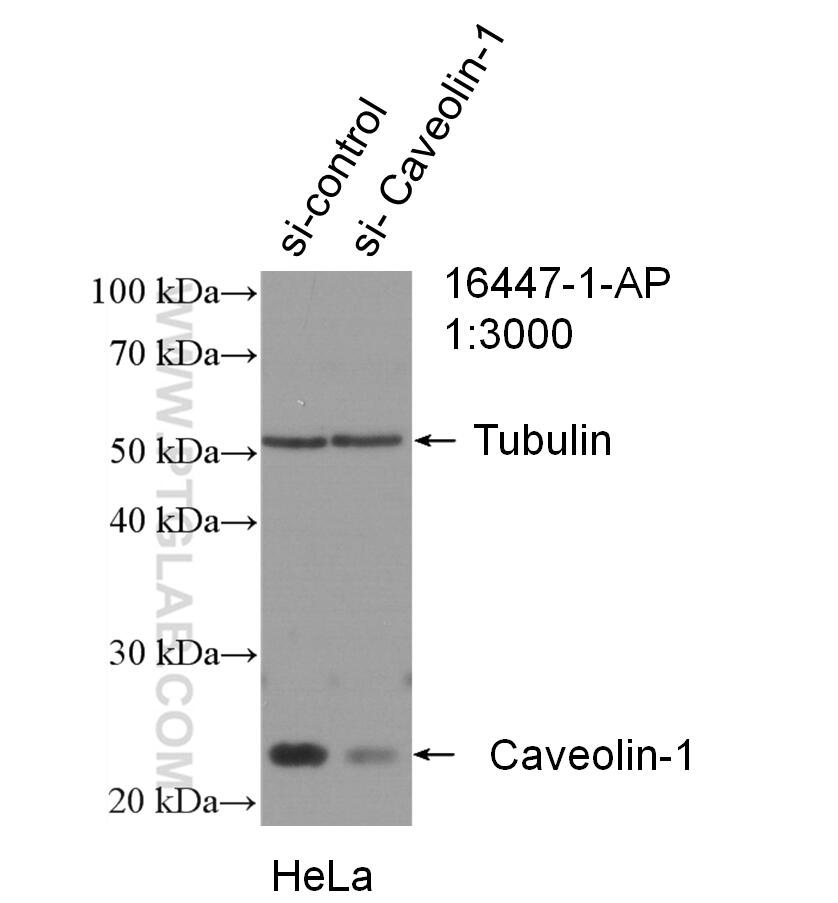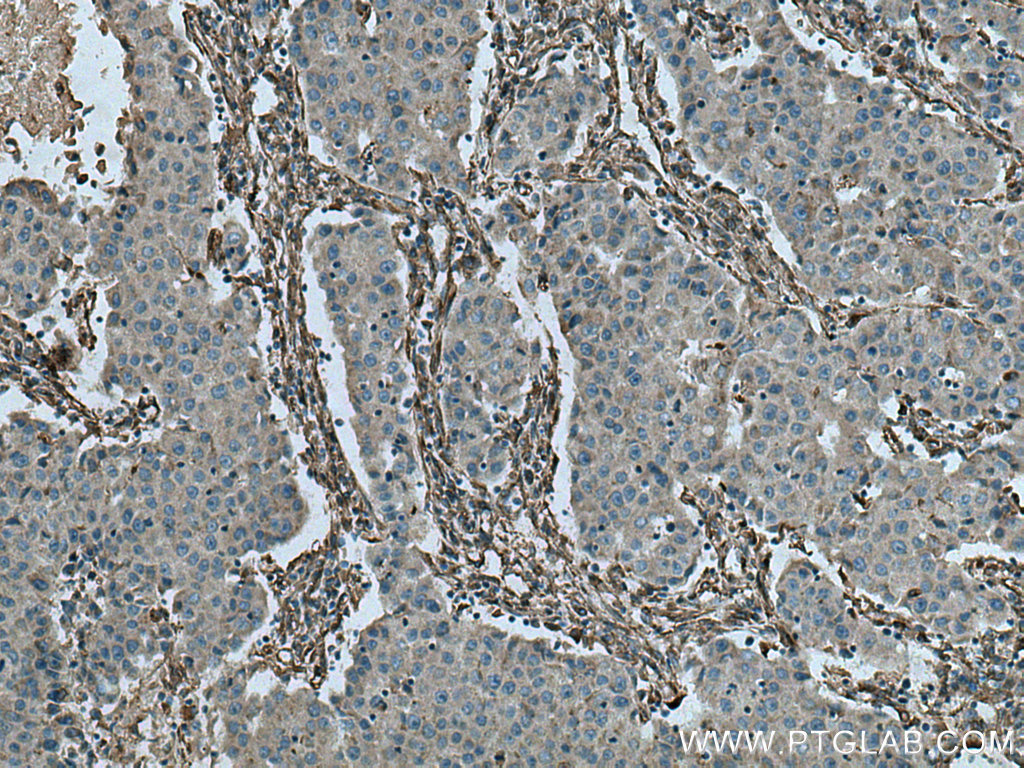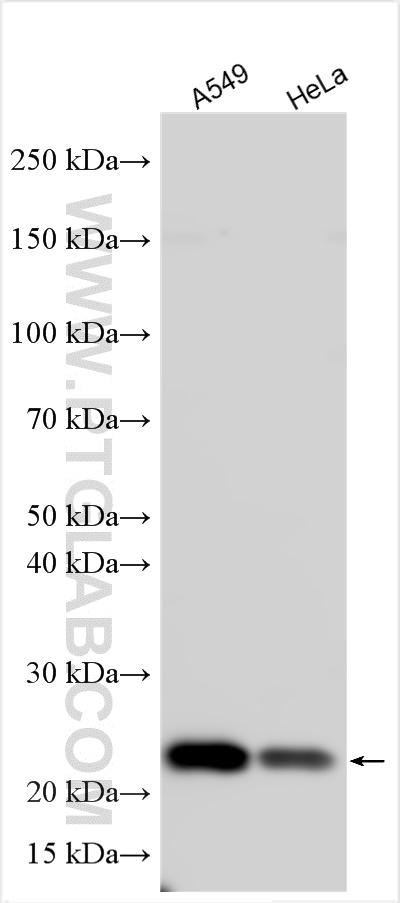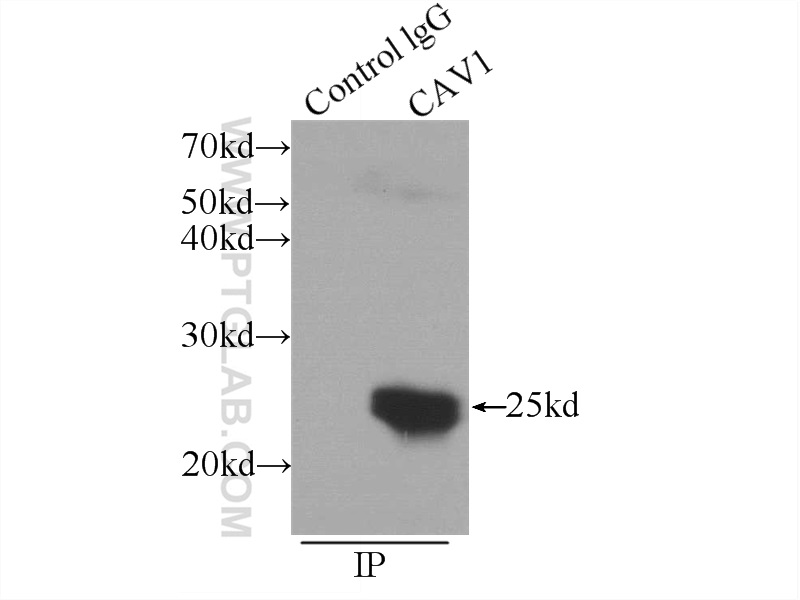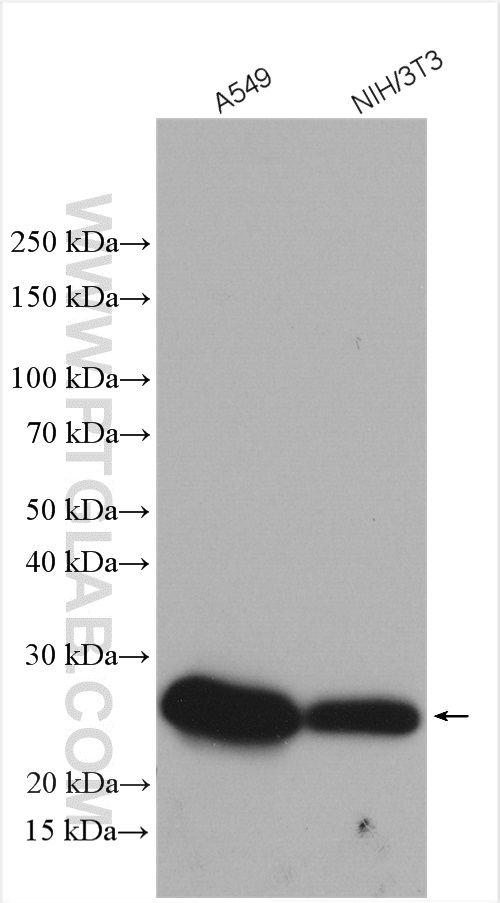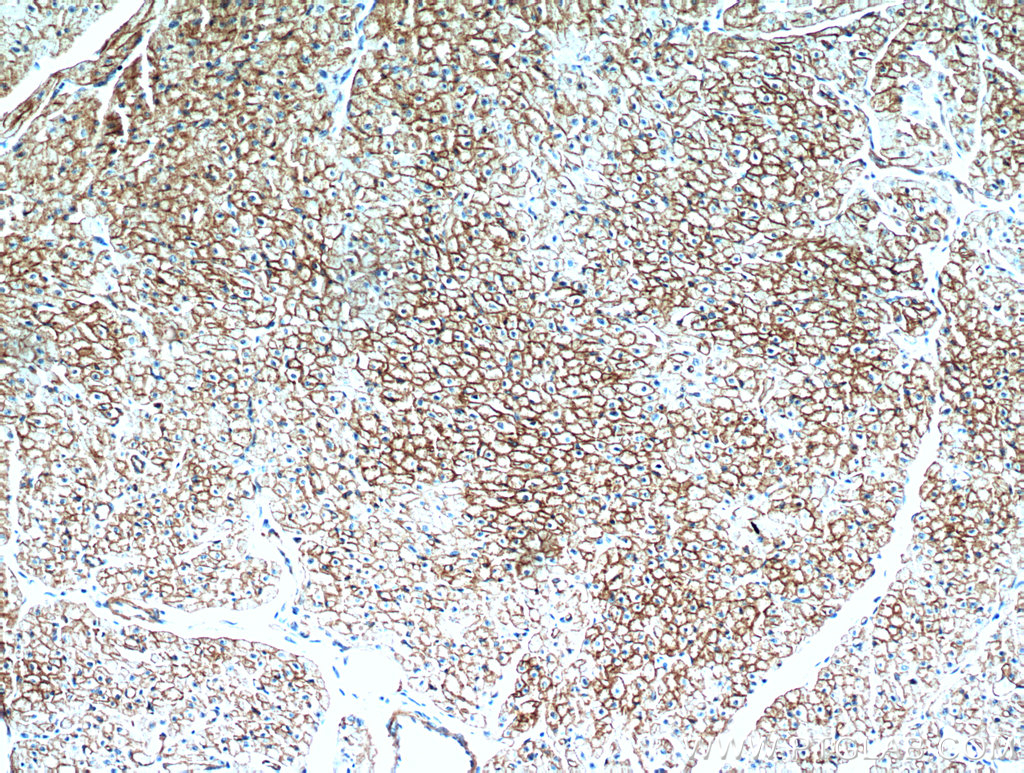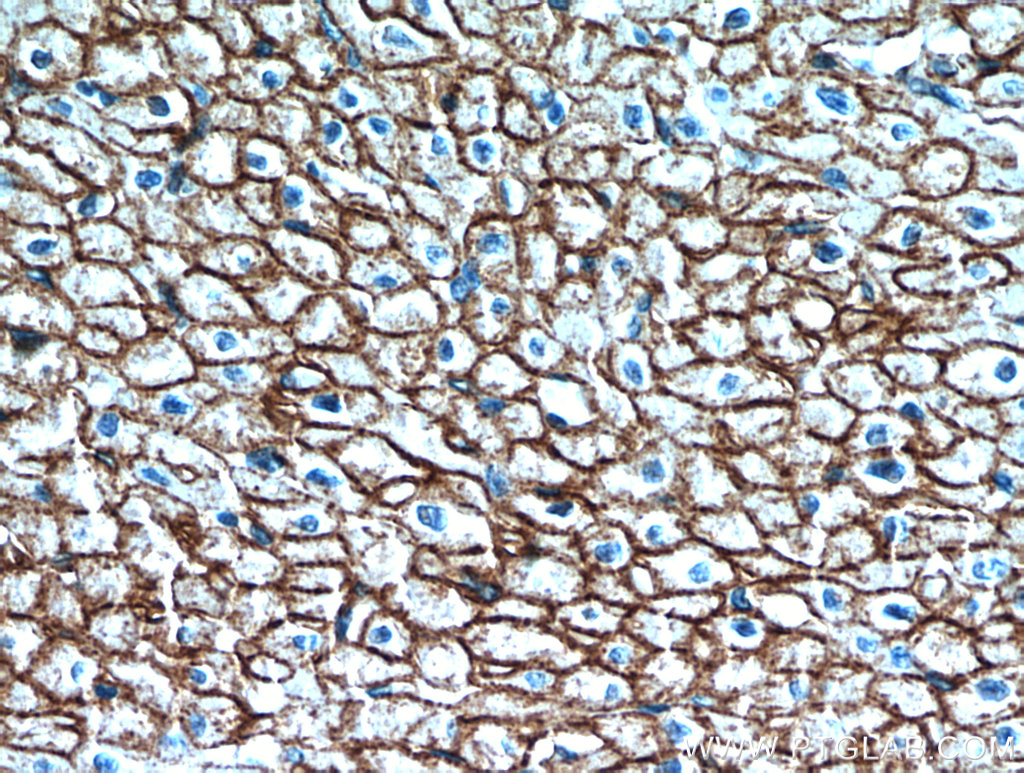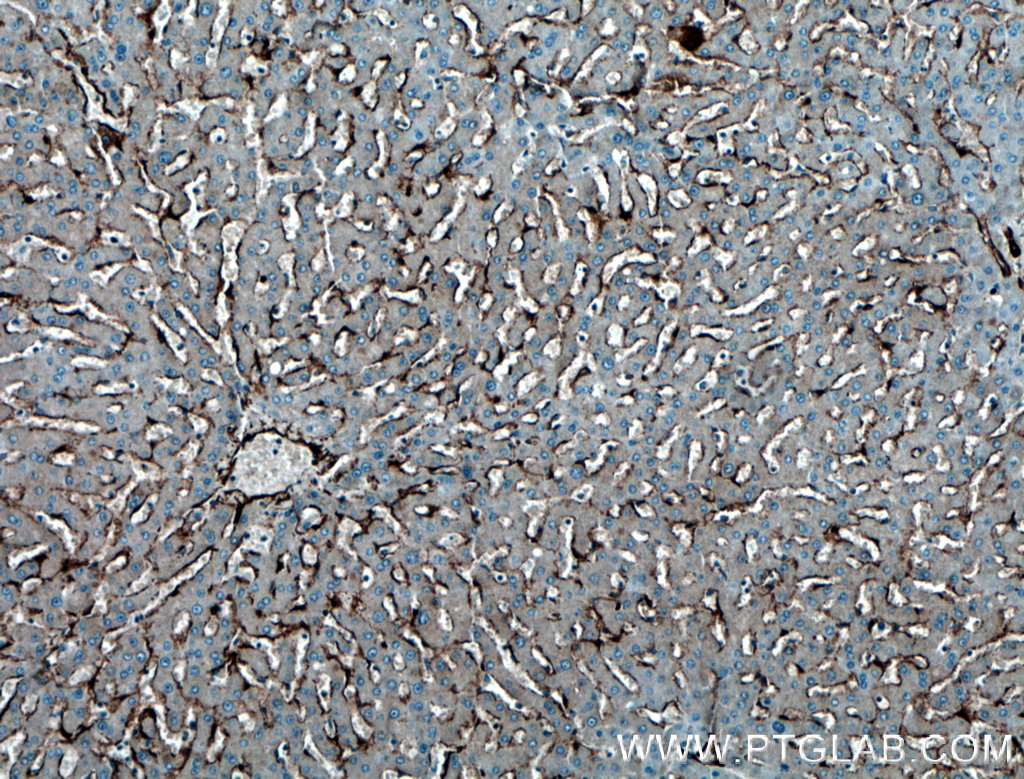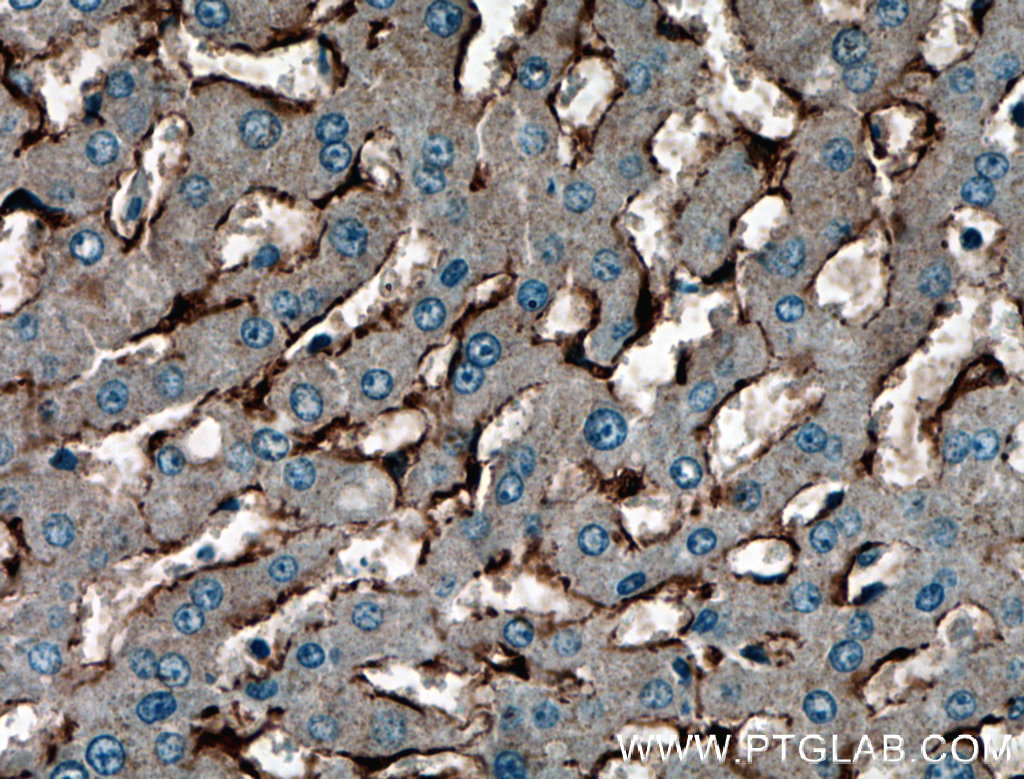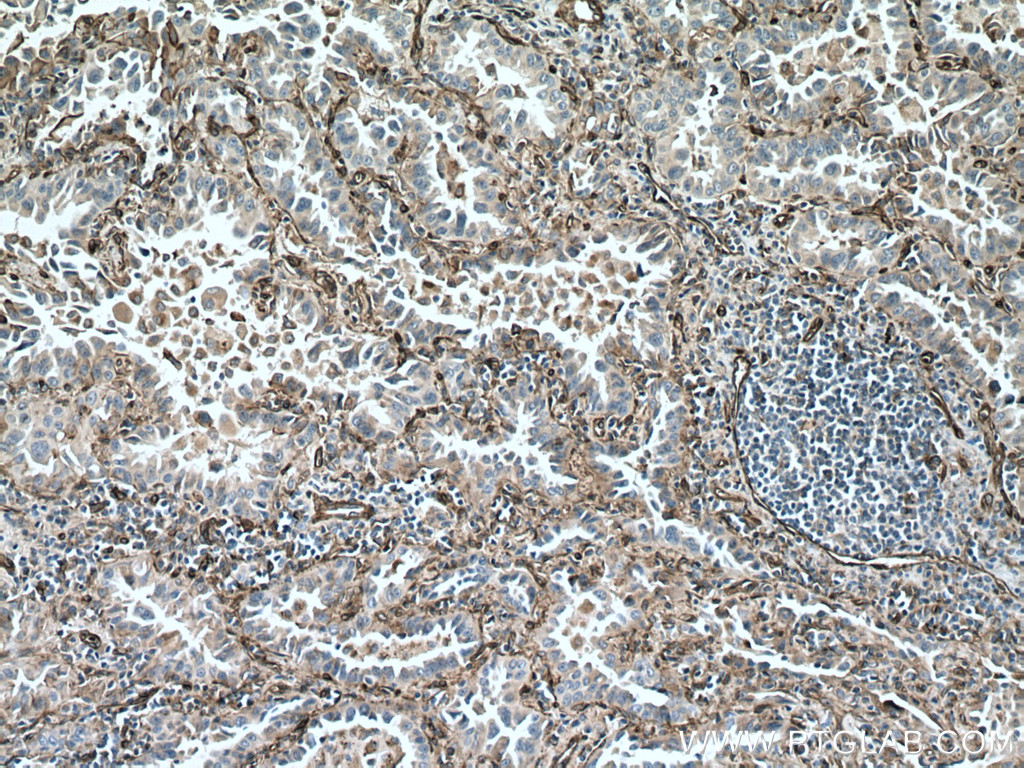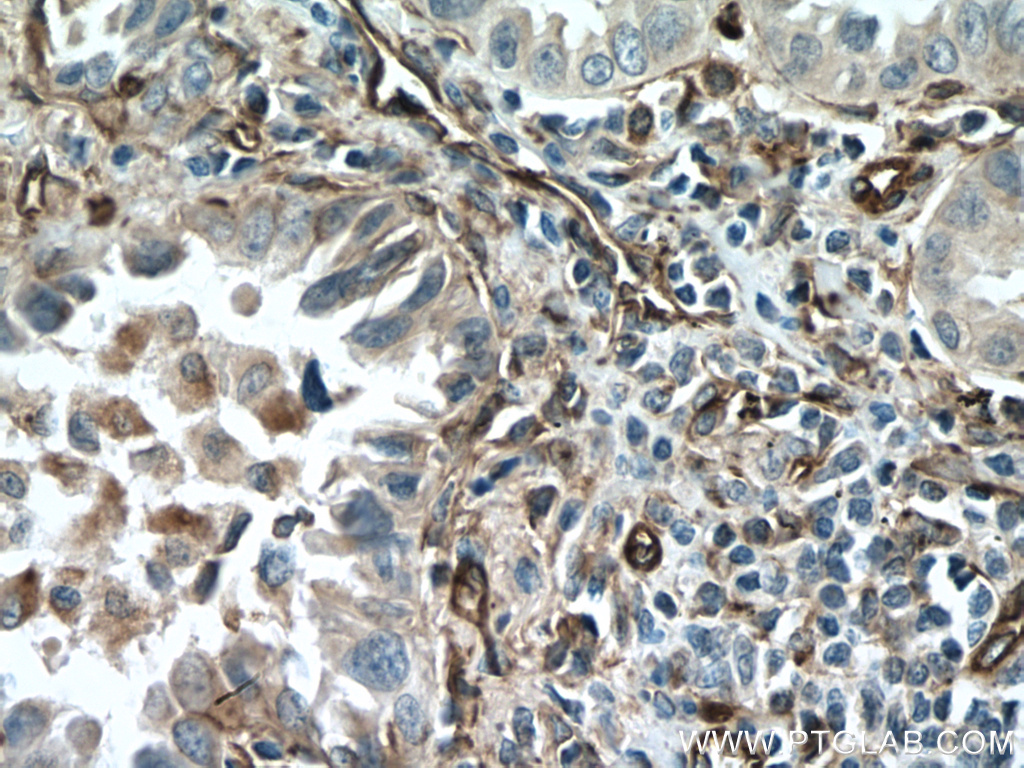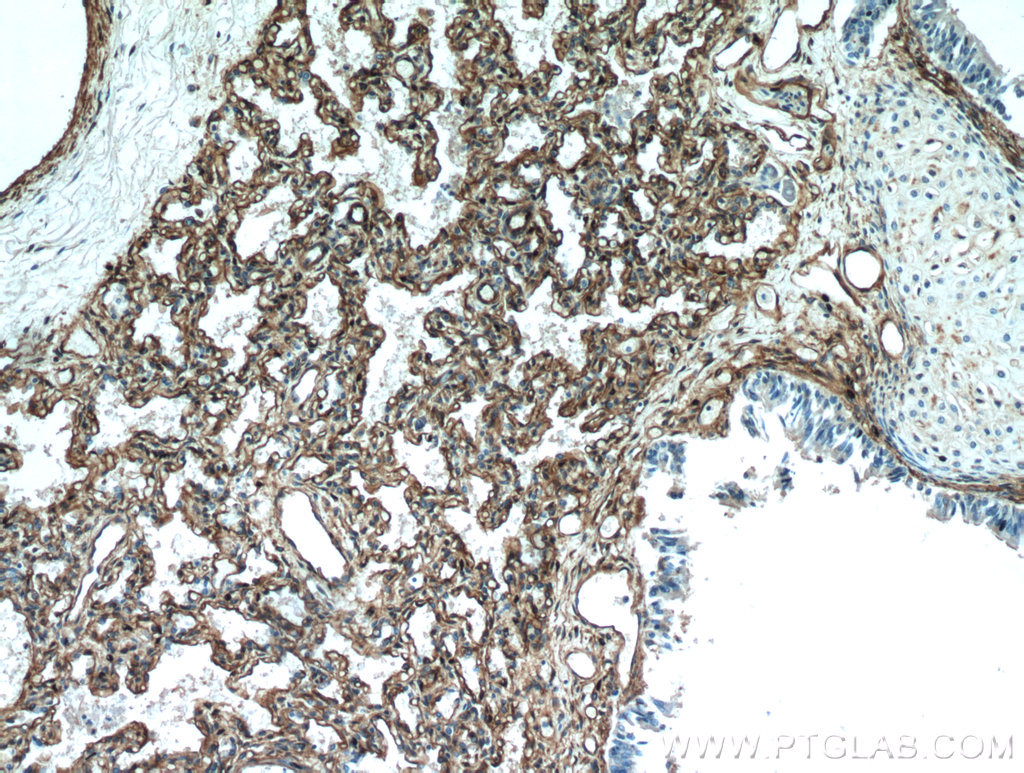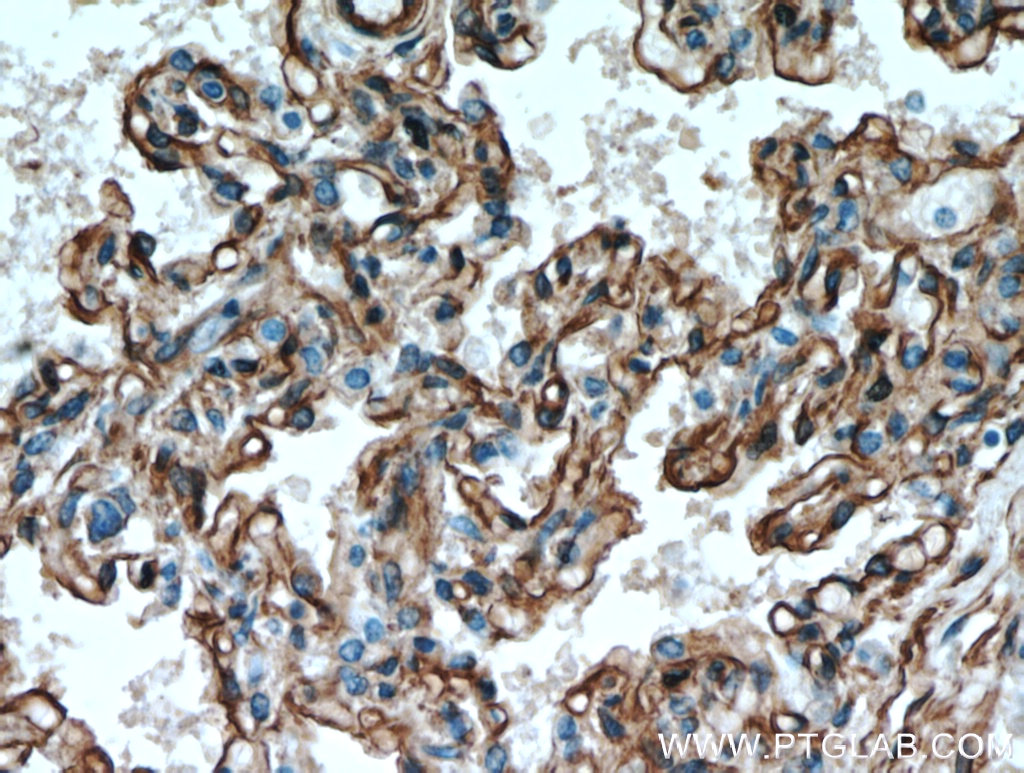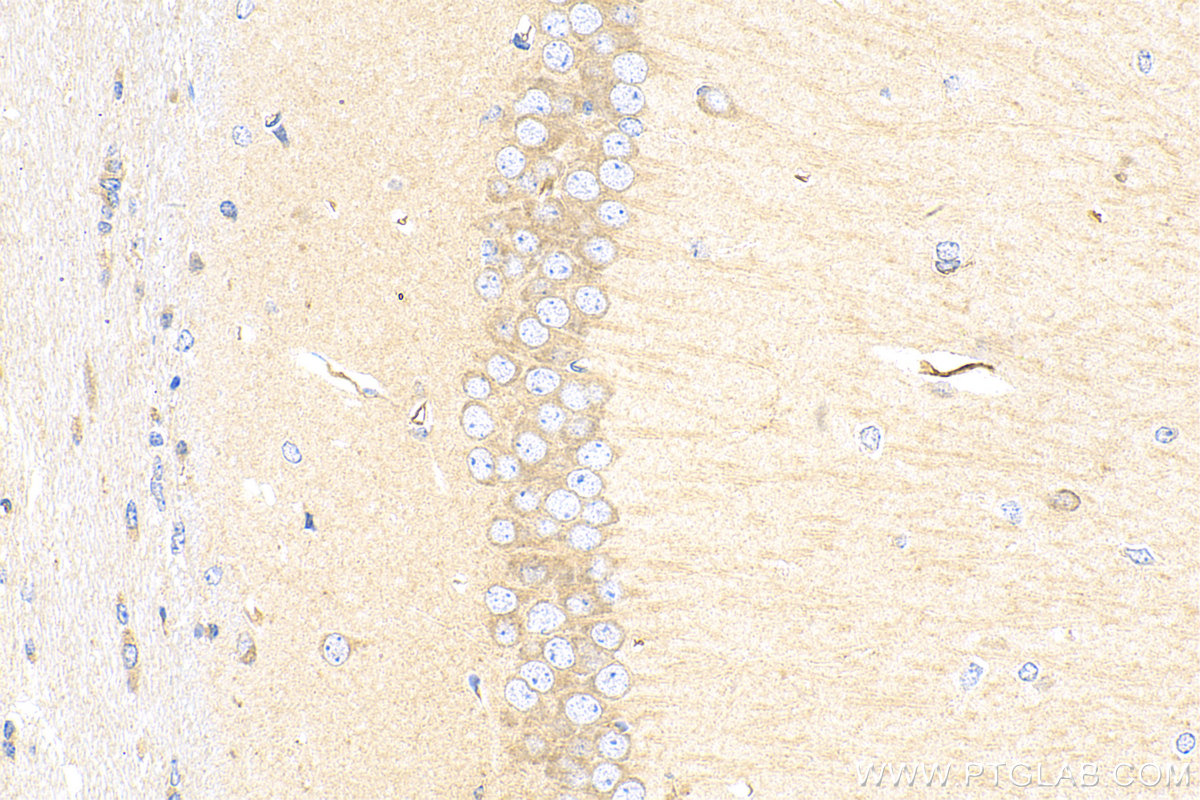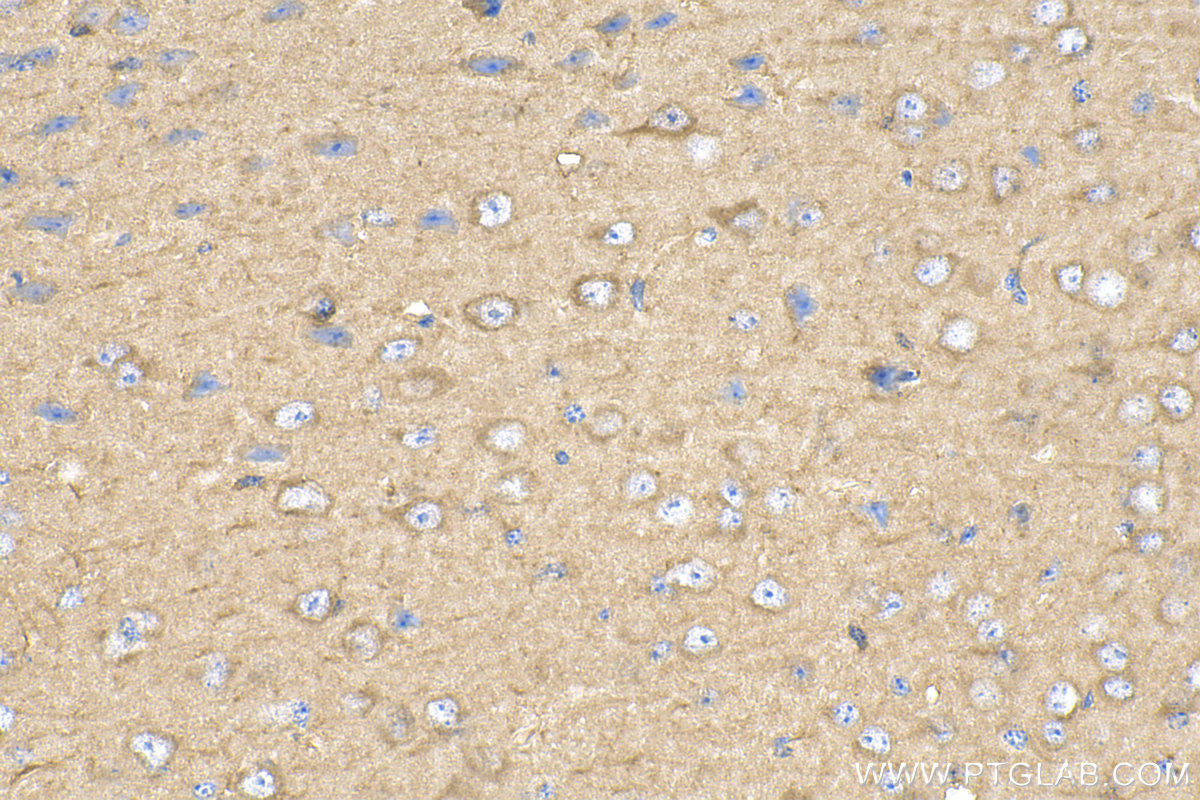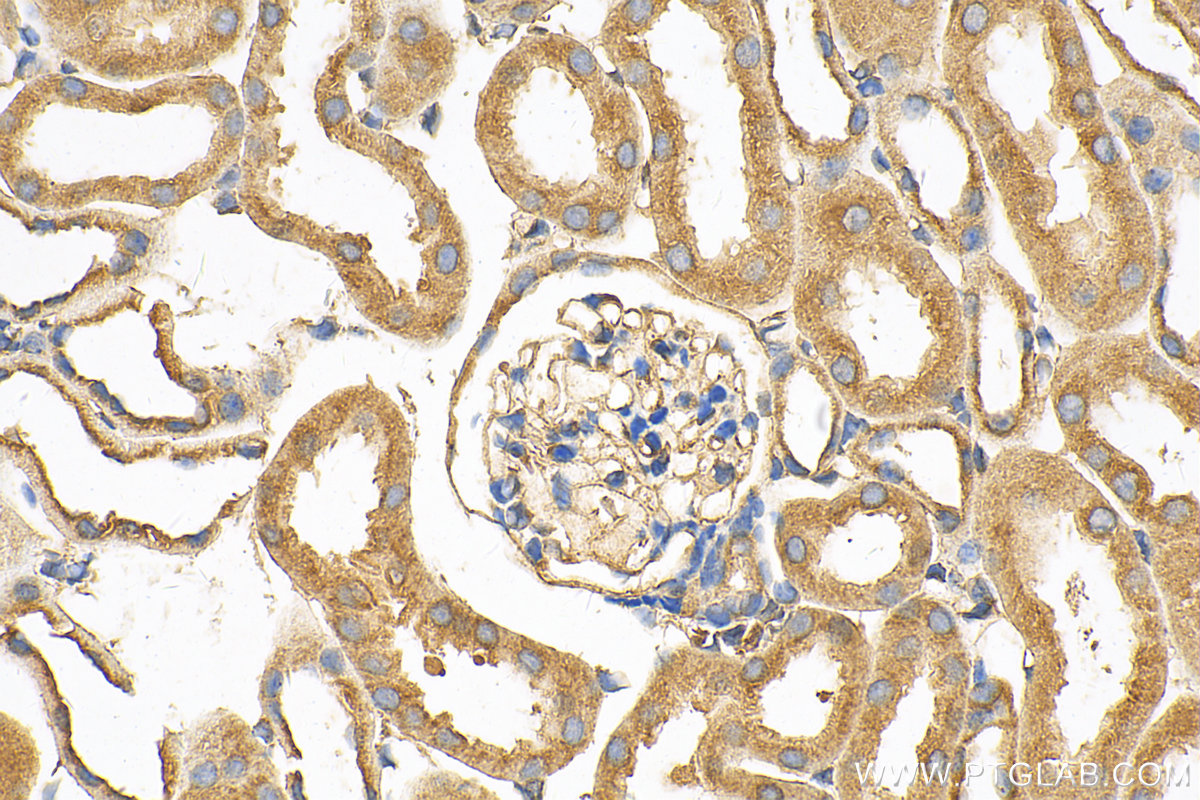验证数据展示
经过测试的应用
| Positive WB detected in | A549 cells, HeLa cells, NIH/3T3 cells |
| Positive IP detected in | A549 cells |
| Positive IHC detected in | human breast cancer tissue, human lung tissue, human heart tissue, human liver tissue, human lung cancer tissue, mouse brain tissue, mouse kidney tissue Note: suggested antigen retrieval with TE buffer pH 9.0; (*) Alternatively, antigen retrieval may be performed with citrate buffer pH 6.0 |
推荐稀释比
| 应用 | 推荐稀释比 |
|---|---|
| Western Blot (WB) | WB : 1:1000-1:8000 |
| Immunoprecipitation (IP) | IP : 0.5-4.0 ug for 1.0-3.0 mg of total protein lysate |
| Immunohistochemistry (IHC) | IHC : 1:50-1:500 |
| It is recommended that this reagent should be titrated in each testing system to obtain optimal results. | |
| Sample-dependent, Check data in validation data gallery. | |
产品信息
16447-1-AP targets Caveolin-1 in WB, IHC, IF, IP, CoIP, ELISA applications and shows reactivity with human, mouse, rat samples.
| 经测试应用 | WB, IHC, IP, ELISA Application Description |
| 文献引用应用 | WB, IHC, IF, IP, CoIP |
| 经测试反应性 | human, mouse, rat |
| 文献引用反应性 | human, mouse, rat, canine, monkey, zebrafish, bovine |
| 免疫原 |
CatNo: Ag8049 Product name: Recombinant human Caveolin-1 protein Source: e coli.-derived, PET28a Tag: 6*His Domain: 11-179 aa of BC006432 Sequence: GHLYTVPIREQGNIYKPNNKAMADELSEKQVYDAHTKEIDLVNRDPKHLNDDVVKIDFEDVIAEPEGTHSFDGIWKASFTTFTVTKYWFYRLLSALFGIPMALIWGIYFAILSFLHIWAVVPCIKSFLIEIQCISRVYSIYVHTVCDPLFEAVGKIFSNVRINLQKEI 种属同源性预测 |
| 宿主/亚型 | Rabbit / IgG |
| 抗体类别 | Polyclonal |
| 产品类型 | Antibody |
| 全称 | caveolin 1, caveolae protein, 22kDa |
| 别名 | Caveolin 1, CAV1, MSTP085, CGL3, CAV |
| 计算分子量 | 22 kDa |
| 观测分子量 | 20-25 kDa |
| GenBank蛋白编号 | BC006432 |
| 基因名称 | CAV1 |
| Gene ID (NCBI) | 857 |
| RRID | AB_10732595 |
| 偶联类型 | Unconjugated |
| 形式 | Liquid |
| 纯化方式 | Antigen affinity purification |
| UNIPROT ID | Q03135 |
| 储存缓冲液 | PBS with 0.02% sodium azide and 50% glycerol, pH 7.3. |
| 储存条件 | Store at -20°C. Stable for one year after shipment. Aliquoting is unnecessary for -20oC storage. |
背景介绍
Caveolin-1 (CAV1), a multifunctional protein, is the main constituent molecule of caveolae and represents a scaffolding molecule for several signaling molecules including epidermal growth factor receptor (PMID: 19641024). Several studies have implicated that a reduced expression of CAV1 was found in cancers including head and neck carcinoma (PMID: 19002186). However, other studies recognize CAV1 as a tumor promoter because CAV1 is overexpressed in various kinds of cancers, especially in oral cancer (PMID: 20558341). Recent study also show that CAV1 is involved in astric Cancer (PMID: 25339030). MW of Caveolin-1 is from 20-25 kDa due to phosphorylation (PMID: 10198051).
实验方案
| Product Specific Protocols | |
|---|---|
| IHC protocol for Caveolin-1 antibody 16447-1-AP | Download protocol |
| IP protocol for Caveolin-1 antibody 16447-1-AP | Download protocol |
| WB protocol for Caveolin-1 antibody 16447-1-AP | Download protocol |
| Standard Protocols | |
|---|---|
| Click here to view our Standard Protocols |
发表文章
| Species | Application | Title |
|---|---|---|
Nucleic Acids Res Nucleosomes enter cells by clathrin- and caveolin-dependent endocytosis. | ||
Dev Cell Vangl2 limits chaperone-mediated autophagy to balance osteogenic differentiation in mesenchymal stem cells. | ||
Redox Biol Selenoprotein K contributes to CD36 subcellular trafficking in hepatocytes by accelerating nascent COPII vesicle formation and aggravates hepatic steatosis | ||
Biomaterials Combination antitumor immunotherapy with VEGF and PIGF siRNA via systemic delivery of multi-functionalized nanoparticles to tumor-associated macrophages and breast cancer cells. | ||
Small Smart Carbon Nanotubes with Laser-Controlled Behavior in Gene Delivery and Therapy through a Non-Digestive Trafficking Pathway. |

